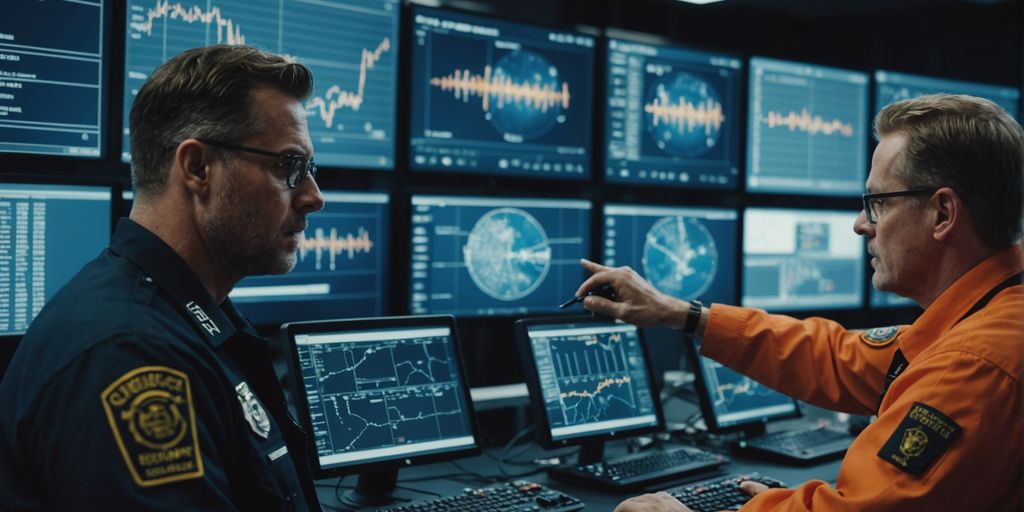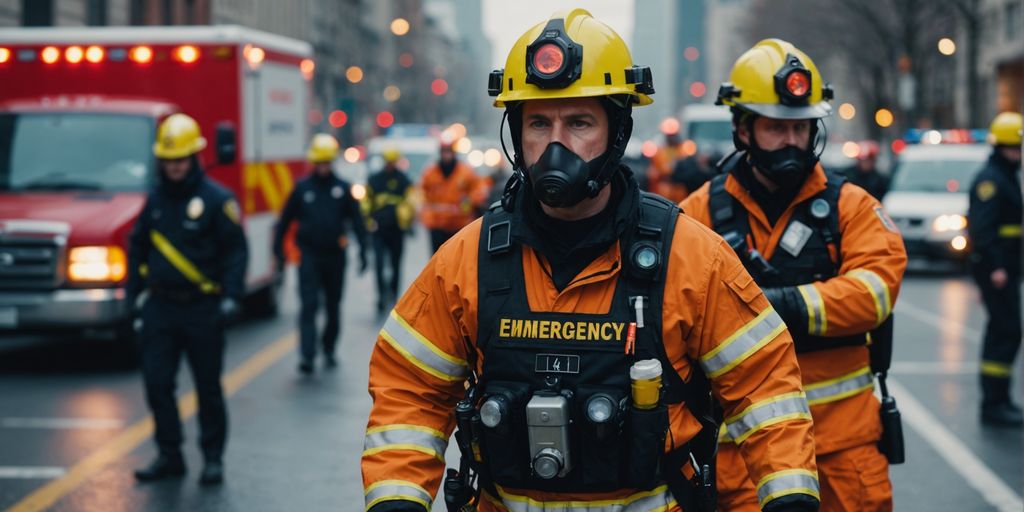In today’s world, the landscape of threats is constantly changing. This makes it crucial for emergency response teams to stay ahead of the curve. By focusing on proper training, using advanced technology, and working together with local authorities, we can better prepare for any situation. This article explores different strategies to enhance security and ensure a quick and effective response to modern threats.
Key Takeaways
- Regular training and drills are essential to keep emergency response teams ready for any situation.
- Using advanced technology like surveillance cameras and secure communication systems can help detect and respond to threats faster.
- Quickly assessing the situation and following clear communication protocols are vital during an emergency.
- Working closely with other security personnel and first responders can improve coordination and effectiveness.
- Evaluating past incidents and learning from them helps improve future responses and strategies.
Training and Drills: Reinforcing Readiness and Response
Scenario-Based Training for Realistic Preparations
Scenario-based training is essential for preparing for real-life emergencies. By simulating various scenarios, such as natural disasters or security breaches, teams can practice their responses in a controlled environment. This type of training helps identify potential weaknesses and improve overall readiness.
Advanced Combat and Defensive Skills Enhancement
Enhancing combat and defensive skills is crucial for security personnel. Regular training sessions should cover a range of topics, including self-defense techniques and the use of non-lethal weapons. This ensures that security teams are well-prepared to handle any situation that may arise.
Mental Resilience and Stress Management Training
Mental resilience is just as important as physical readiness. Training programs should include stress management techniques to help personnel stay calm and focused during emergencies. This can include mindfulness exercises, breathing techniques, and other methods to manage stress effectively.
Regular drills and exercises are vital for maintaining readiness. They ensure that all team members are familiar with emergency procedures and can act quickly and efficiently when needed.
Integrating Advanced Technology in Security Protocols
In today’s world, ensuring safety, security, and emergency preparedness is more important than ever. Advanced technology plays a crucial role in enhancing security protocols and making emergency responses more effective.
Immediate Actions During an Emergency
Quick Assessment of the Situation
In the chaos of an emergency, it’s crucial to assess the situation quickly and calmly. This involves identifying the nature of the threat and understanding potential risks. Quick assessments lay the groundwork for effective responses. Security personnel should:
- Identify immediate threats
- Determine the severity of the situation
- Decide on the best course of action
Communication Protocols
Clear and effective communication is vital during an emergency. Security teams must follow established communication protocols to ensure everyone is informed and coordinated. This includes:
- Using secure communication channels
- Providing clear instructions to all team members
- Keeping constant updates on the situation
In an emergency, following communication protocols can make the difference between chaos and a coordinated response.
Collaborative Efforts with Security Personnel and First Responders
Security guards rarely work alone. By working together, they can share resources and skills for a better response. Teamwork is key during emergencies, allowing security teams to handle situations more effectively.
Collaboration doesn’t stop with security teams. Security personnel can work together with first responders, such as firefighters, police officers, and paramedics, to support their activities during disasters. This unified approach ensures a complete response that covers all parts of an emergency.
Effective communication strategies are essential to share safety protocols and strategies with the broader community, aiming to reduce opposition to essential security measures.
Ensuring Public Safety through Effective Crowd Management and Evacuation Procedures
Crowd Management
For security guards overseeing public spaces, crowd management is a critical skill. We provide insights into handling crowds during emergencies to prevent panic and ensure orderly evacuations. Effective crowd management is essential for maintaining public safety and minimizing the risk of injuries.
Evacuation Procedures
When evacuation is necessary, security guards play a pivotal role. This section outlines effective evacuation procedures and the steps to guide people to safety. From developing evacuation plans to executing them seamlessly, security guards ensure that individuals can evacuate efficiently in times of crisis.
Post-Emergency Assessment and Learning from Incidents
After an emergency, it’s important to look back and see how well the response worked. Post-emergency assessments help find out what went right and what needs fixing. This step is key to making future responses better and fixing any problems.
Every emergency teaches us something. By looking at what happened and why, we can learn how to stop it from happening again or handle it better next time. This means listening to everyone involved, like the main person in charge, the security team, and others. This way, we get a full picture of what happened and can make our plans stronger.
Reflecting on past events helps us improve and be more ready for the future.
Building a Support Network and Liaising with Local Authorities
Creating a strong support network is essential for effective emergency response. This network should include contact information for local emergency services and other key stakeholders. Regular meetings and communication can help ensure everyone is on the same page and ready to act when needed.
- Identify key local emergency services and stakeholders.
- Schedule regular meetings to discuss emergency plans.
- Share updates and changes in protocols.
A well-established support network can significantly enhance the efficiency and effectiveness of emergency responses.
A proactive relationship with local law enforcement agencies is a cornerstone of high-level security strategies. Such collaborations can provide additional resources during emergencies, such as crowd control, area cordoning, or investigative support after an incident. Security teams should regularly liaise with local police, sharing information and intelligence that may help preempt potential threats. Participating in community security programs can also foster a sense of mutual trust and cooperation.
Conclusion
In today’s world, the nature of threats is always changing. To keep people safe, emergency response teams need to stay one step ahead. This means using the latest technology, practicing regularly, and working together with other groups. By doing these things, we can make sure that when a crisis happens, we are ready to act quickly and effectively. Staying prepared and adaptable is key to protecting our communities and ensuring everyone’s safety.


